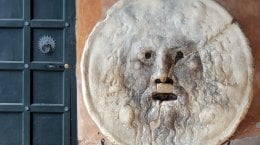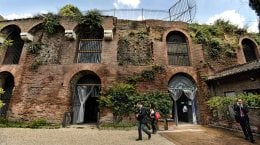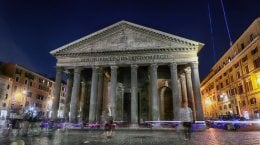Official Reseller Rome and Vatican – Jubilee 2025
St. Giovanni and the Lateran Complex
The Basilica of St. Giovanni in Laterano is also known as the Cathedral of Rome. The Catholic basilica, in fact, is the cathedral of the diocese of Rome, and therefore under the control of the Pope as Bishop of Rome (who, however, delegates many of its functions to Bishop Angelo De Donatis, as archpriest of that basilica). Only the Pope and the members of the clergy who he delegates can celebrate Holy Mass in this cathedral.
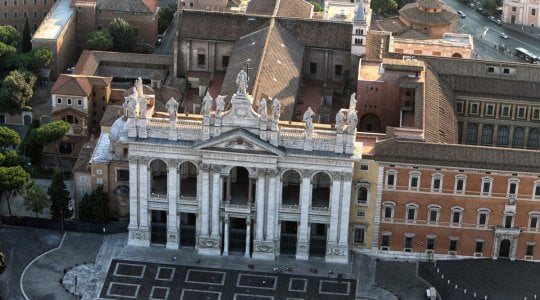
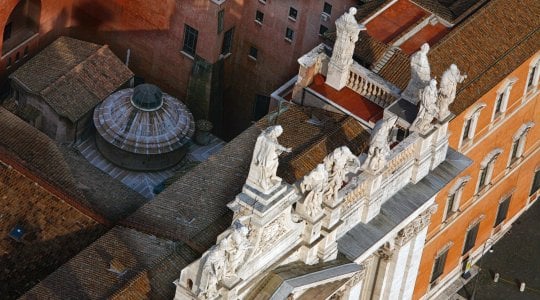
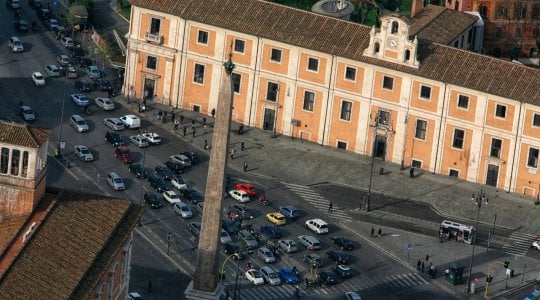
Multilingual audio guide to visit only the Basilica of San Giovanni in Laterano and the entrance to the Treasury Museum.
Extras: Entrance to the Cloister and entrance to the Sancta Sanctorum with Audioguide.
Guided tour of the Basilica and audio guide for the Cloister.
Options: adults and children.
The Basilica of St. Giovanni in Laterano is also known as the Cathedral of Rome. The Catholic basilica, in fact, is the cathedral of the diocese of Rome, and therefore under the control of the Pope as Bishop of Rome (who, however, delegates many of its functions to Bishop Angelo De Donatis, as archpriest of that basilica). Only the Pope and the members of the clergy who he delegates can celebrate Holy Mass in this cathedral.
The basilica is located on the Celio hill, in the IX Appio Latino zone, therefore at a certain distance from the Vatican City (to be precise, about 6 kilometers away): however, the Italian State has recognized the extraterritoriality of the cathedral, which is located under the jurisdiction of the Vatican.
Currently, it is possible to reach the basilica thanks to the metro network, since in its immediate vicinity there is the St. Giovanni Metro Station (Metro Line C). Those who decide to travel by bus, on the other hand, can take any means leading to Piazza St. Giovanni in Laterano or Porta St. Giovanni.
The history of the basilica is very long, as it is its full name: to be precise, in fact, the official name reserved for the cathedral of Rome is the Papal Archbasilica Major Archpriest Cathedral of the Holy Savior and of the Saints John the Baptist and Evangelist in Lateran. Precisely because of its ancient history, which originated at the time of the Western Roman Empire, the basilica is currently recognized as the oldest in the world.
In ancient times, the ground on which the basilica rests belonged to the Laterans, a noble Roman family, who had built a tenement there; in the 1st century, however, the land was confiscated from the family by the Emperor Nero, as one of its members was found guilty (perhaps erroneously) of having participated in a failed plot against the sovereign and for this he was condemned to death.
Even before the consecration, however, a building was constructed in the ground to serve as the residence of the emperor’s bodyguards.
Later, however, Constantine donated the lands to the Church, in recognition of Christ for the victory achieved at the Battle of Ponte Milvio, so the building was consecrated around A.D. 320.
Over the many centuries that separate the origins of the basilica from the present, it has been subject to numerous changes and reconstructions. To be precise, 4 reconstructions are recognized, the most recent of which dates back to the Baroque era, which gave the basilica its current appearance.
And indeed, the baroque appearance of the structure is easily recognizable. The coffered ceiling of the central nave, with rectangular recesses arranged in a regular manner, has as its sole protagonist gold, which creates a remarkable sumptuous effect and allows the light to spread very well, coming from the windows that are properly arranged on the sides of the central nave. Furthermore, between one window and the other, there are paintings, set in oval gold frames, representing the Prophets of the Bible.
Another distinctly Baroque element, in which, however, this style finds a point in common with Gothic, is the high altar: which is also made with high quantity gold, is protected by a majestic canopy, whose points and heights directly recall the international Gothic. The canopy, however, also acts as a reliquary: in fact, the skulls of St. Peter and St. Paul are preserved, as well as a fragment of the table on which the last supper of Jesus would have been celebrated.
The roof of the central nave and the sumptuous altar are however contrasted by the floor, in cosmatesco style, which was built in the third reconstruction of the basilica, dating back to the late Middle Ages.
In the current structure, the central aisles are separated from the lateral ones by round arches, arranged periodically on each side. In fact, between one arch and another there are niches that preserve enormous marble statues depicting the 12 apostles, all made in the 18th century.
The side aisles, unlike the central one, do not have coffers, but are instead flat (they present, however, different decorations); the upper transept, instead, has innumerable frescoes that represent numerous religious figures, and has a spectacular organ inside.
The remains of numerous pontiffs are preserved in the basilica, to which as many chapels are dedicated (placed near the secondary naves). Among these it is possible to quote Innocent III, John XII and Sylvester II. There are sinister legends related precisely to the tomb of Pope Sylvester II, according to which the remains of the man would give omens when the death of the current Pope is approaching. Furthermore, the story goes that during an exhumation the remains of a man had been found unchanged, but that they immediately vanished on contact with the air.
The door of the main façade of the basilica also comes from the ancient building that housed the Roman Senate, known as the Curia Iulia.
An external baptistery is attached to the basilica, with a Renaissance façade and a Baroque interior.
The basilica, together with its articulated architectural complex, is located in an area that is teeming with history and religion. Just think that, immediately adjacent to the basilica, there is the Scala Santa, which is the staircase that according to the Holy Scriptures, Jesus would have been to be subjected to the interrogation of Pontius Pilate.
Not far from the cathedral of Rome, there is also the Colosseum, as well as the Circus Maximus and the Baths of Caracalla (which host cultural events such as concerts and shows).
Moreover, departing from St. Giovanni metro station, in the opposite direction from the path that leads to the basilica, there is Via Appia Nuova that houses numerous shops, leading to Piazza Re di Roma, in the center of which there is a small circular garden.
Finally, there are other cultural attractions near the cathedral of Rome, including the Liberation Museum or the National Museum of Musical Instruments, as well as a famous market, namely Via Sannio market.
Basilica: Every day from 07.00 a.m. to 6.30 p.m.
Cloister: available every day from 09.00 a.m. to 6.00 p.m., last admission 5.30 p.m.
Sancta Sanctorum: available from Monday to Saturday, morning from 09.30 a.m. to 1.00 p.m. with last entry at 12.45 p.m. Afternoon from 3.00 p.m. to 5.00 p.m., last entry at 4.45 p.m. Not available on Sundays and Vatican holidays.
Metro
Line A, St. Giovanni Metro Station
Bus
Last stop for bus n.53, n.186, n.218, n.650, n.665
Stop in St. Giovanni area for bus n.16, n.81, n.85, n.87, n.360, n.571, n.590, n.673, n.714, n.717, n.810
Tram
Tram n.3, St. Giovanni Stop
Colosseum, Circo Massimo, Terme di Caracalla, Roman Forum and Palatine, Mamertine Prison




